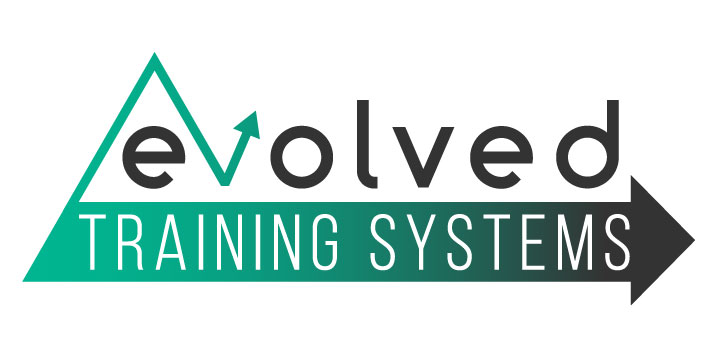Spring/Summer 2020 consisted of an extremely productive focus on general hypertrophy across the Evolved Daily programs. The most recent macrocycle utilized a “Reverse Pyramid” approach to the accumulation period.
Looking back further, it has been a great year of training, consisting of 3 progressive Hypertrophy “macrocycles” (including a PowerBuilding phase in the winter 2020). We are now approaching the theoretical “end” of the training year.
The proper way to finish a long hypertrophy year of training is with a 4-6 week metabolite phase. Quick lesson to better understand why:
Three Pathways to Muscle Growth
Mechanical Tension – This is the actual tension applied to muscles. You are winning if you consistently provide overload over time. Not session to session, but that you are getting stronger for more reps over months and years. Evidence has shown, beyond a doubt, that it is the primary driver of muscle growth. The best way we currently know how to ensure progress over time is to get stronger on conventional movements with straight sets.
Metabolic Stress (Metabolite Training) – This has been shown to have SOME impact on muscle growth, thought significantly less than mechanical tension. This is all about getting a pump, accumulating lactic acid, doing supersets, dropsets, giant sets, myo-reps, and other techniques that make you want to throw up.
Muscle Damage – Some studies actually demonstrate that muscle damage is counterproductive to muscle growth. But damage is a result of training hard and providing overload. The caution here is just to avoid chasing muscle damage or using DOMS as a sign that you had a successful workout. If you constantly change training, you will constantly get sore, but that doesn’t mean you are increasing mechanical tension over time.
Many people believe that hypertrophy training and Metabolite Training are the same thing (that hypertrophy requires the constant use of supersets and other lactic burn techniques). It’s important to provide a clarification here.
Proper hypertrophy training is composed of multiple mesoycles in succession where there is a focus on progressing volume and intensity over time on the big lifts. Longer rest periods, no metabolite work whatsoever, and complete focus on minimizing variables to optimize adaptations. This is how you drive mechanical tension over time (after all, mechanical tension is clearly the thing that most accurately correlates with muscle growth).
There are a number of reasons you should NOT utilize metabolite training all the time, and to be very diligent when you implement it into your programming.
Three Things You Should Know About Metabolite Training
1. Metabolite training is not the ENTIRE workout. There must still be a conventional lift that is trackable and progressive for each muscle group. Otherwise, how do you know the metabolite work is effective at increasing mechanical tension?
2. The metabolite work will be at the end of each muscle group because it is acutely fatiguing. Imagine if you did the first exercise of a muscle group with drop sets and supersets… How productive do you think the rest of the workout would be? You would just be fighting fatigue and lifting significantly less weight than you could (meaning less mechanical tension).
3. All sets are meant to be performed with a 1-2 RIR (Reps in Reserve). In prior cycles, we’ve started at 2-3 RIR and then progressed through the cycle and increasing proximity to failure. For Metabolite work, everything should be just shy of failure, where you know you could do one more quality rep. That’s hard work!
Examples of Metabolite Training
1. Supersets – Two movements back to back without rest. This could be similar muscle groups (Squats to Lunges) or it could be antagonistic muscle groups (Bench press to Bentover Row)
2. Drop Sets – One movement performed for multiple sets by decreasing the weight set to set (Lateral Raises with 30 lbs, then 20 lbs, then 10 lbs)
3. Giant Sets – Three or more movements back to back (can be same or varying muscle groups)
4. Myo Reps – This is a version of “Rest/pause” reps. You will do a hard set of 8-15 Reps, and then complete multiple “mini sets of 2-4 reps” with 10-20 seconds rest between each mini set
5. Pre-Exhaustion – This is taking an isolation movement and then supersetting it with a compound movement. Moving from DB flies directly to Bench Press would fatigue the pecs further.
6. “Rep Target” sets – This is one of my personal faves. Assume target reps are 60, start with a weight you can do for 15-20 Reps and then chip away in sets of 6-10 reps the rest of the way until you hit 60 reps. I really like these because they are also trackable and can be progressed by volume very easily (increasing rep targets; a little foreshadowing for the new cycle)
Cautions of Metabolite Training
1. Achieving the “Pump” – The entire goal of metabolite work is to achieve pumps like you never have before. Most people find that when the pumps start to dissipate or decrease, the effectiveness of the metabolite cycle is nearing its end. Just be aware of this on a general level since it seems to happen after 4-6 weeks of consistent use in programming.
2. Slow-Twitch Conversion – This type of training is similar to lactic threshold training from the aerobic world. It has been shown that the body becomes so efficient at clearing lactic acid, that the effectiveness of the protocol actually diminishes due to some conversion of fast-twitch to slow-twitch fibers. This is great news if you wanna be an endurance athlete, but far from ideal for a strength sport, or those looking to build muscle.
3. Psychological Impact – Metabolite training is brutally difficult. There is a significant amount of mental preparation that goes into getting amped up and excited to feel this kind of pain each session. Creating this level of excitement is taxing and will cause an increase in cortisol. I always look forward to these phases, and then as soon as I’m in the middle of a 60-Rep Lunge set, I wonder why. This then compounds over time, at which point I generally move to the next phase of training.
All The Details and What Comes Next?
The Metabolite cycles begin in early September for both Evolved programs. The general structure of each will be slightly different to fit with the objectives of the specific program, but both will incorporate these principles into the programming for the following 4-6 weeks.
After the Metabolite phase, the proper “next step” in the periodization of a year is to complete a 4-6 week lower volume STRENGTH phase.
There are a few reasons for this:
1. The metabolite phase is the pinnacle of hypertrophy training. It’s like the icing on top. While you could go back to another hypertrophy phase, I tend to believe there is additional benefit in re-sensitizing the body to the stimulus by embarking on a lower volume strength phase.
2. Strength phases are most effective with a lower volumes. This is due to the higher intensity (loads closer to 1-RM) that tax the CNS in a different way than hypertrophy work. Therefore, it is the perfect time to work on strength AND also take a much needed break from the hypertrophy stimulus.
3. It is often said that the strength phase can potentiate further progress. It is unknown exactly how, though the theories state that the body needs phases of maintenance level volumes as a means of “cementing” the gains it has made. Much like we take a deload week every 4-6 weeks, this strength phase acts as a “deload mesocycle” in a sense




